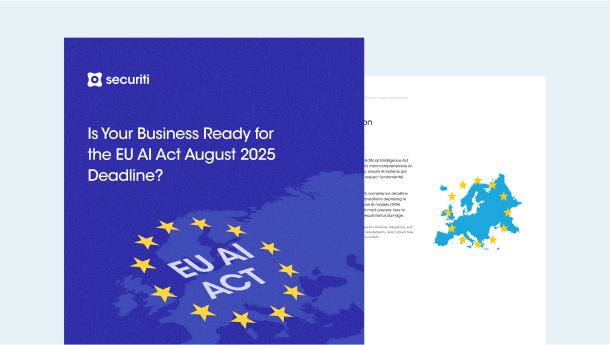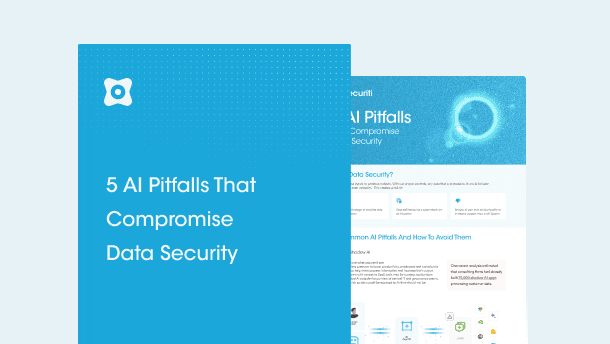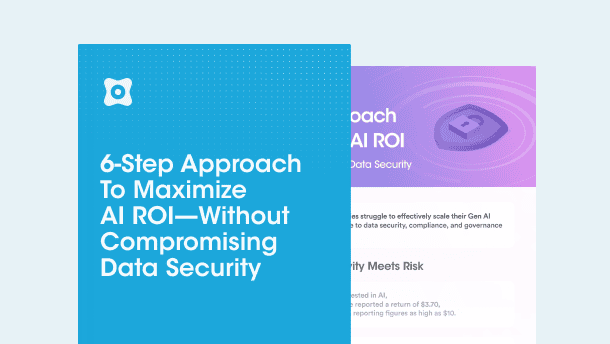Read on to learn more about the best practices when deploying DSPM in multi-cloud environments.
Best Practices For Deploying DSPM in Multi-Cloud Environments
Below are some of the best practices organizations can implement when deploying DSPM in their multi-cloud environments:
Start with High-Impact Use Cases & High-Risk Data
The deployment of the DSPM solution in a multi-cloud context must begin by identifying the most critical business data and its associated workflows. Such assets pose the most financial, reputational, and compliance risks if a breach or any sort of mismanagement were to occur. This can include personally identifiable information (PII), financial records, intellectual property, as well as regulated datasets that comply with regulatory standards, such as the GDPR, HIPAA, or PCI-DSS.
Hence, by alleviating the risks to such datasets, an organization can experience immediate risk reduction. Moreover, through this value-first approach, the teams working on the deployment can work out any operational kinks early on and gain buy-in for the subsequent DSP scaling. Essentially, rather than attempting to secure everything at once, which would be inefficient, an organization should prioritize securing its most critical assets first.
Define a Centralized DSPM Governance Model
Any DSPM deployment strategy, regardless of the context, will only be as successful as the governance structure supporting it. In this instance, with multiple cloud providers involved, an inconsistent set of policies, in addition to siloed decision-making, can undermine the entire thing, regardless of how good the technology is. Hence, it is necessary to have a central governance model that communicates and defines DSPM ownership, data classification standards, remediation workflows, and relevant escalation paths.
However, a centralized governance model does not mean a “one-size-fits-all” approach but rather a shared framework on how the DSPM tools are to be configured, monitored, and deployed while allowing for role-based customization wherever necessary.
Integrate DSPM Into DevSecOps Pipelines
Embedding the DSPM solution into DevSecOps pipelines enables proactive data protection, allowing exposure risks to be identified and mitigated early in the development lifecycle, long before they reach production. This can be particularly critical in cloud-native environments, where developers leverage multiple services. Integration of DSPM with such tools allows for automated scans of all infrastructure-as-code templates, databases, and APIs for any signs of data exposure.
Moreover, this arrangement fosters a culture of security by design, where misconfigurations or data classification issues are identified in real time by engineers, reducing operational friction through the automated detection and enforcement of policy guardrails without impacting innovation within the firm.
Leverage Automated Discovery to Reduce Friction
Traditional security tools rely on invasive agents or manual configurations. These not only act as roadblocks to proactive deployment but also introduce various maintenance-related burdens. DSPM solutions offer automated discovery through API integrations via cloud service providers. Through these tools, sensitive data can be effectively mapped, along with access privileges and the overall risk exposure of each asset, without exposing that data to individual software.
This also enables rapid time-to-value by providing instant visibility across the storage infrastructure. More importantly, this helps identify shadow data and ensure that nothing remains hidden or falls through the cracks, as it would if traditional tools were deployed.
Continuously Refine Policies Based on DSPM Insights
DSPM is not, and must not, be considered a static solution. It requires consistent and continuous improvement, and the environment continues to evolve, with new data sources, users, and risks emerging. DSPM insights must be analyzed to fine-tune classification policies and make necessary updates to the risk threshold, as well as the overall remedial playbook.
Moreover, the dashboards and alerts must not only be reviewed for incident responses but also for proactive governance, and they can often indicate problems that may not seem troublesome now but may become so if left unaddressed. Continuous refinement enables the DSPM solution to evolve in tandem with the cloud adoption strategy, fostering a proactive security posture.
Conclusion
DSPM offers organizations a data-centric security approach that focuses on the organization’s granular data assets rather than macroscopic infrastructure-centric monitoring. Furthermore, DSPM is optimized to address the various data security and privacy-related issues concerning sensitive data. It can identify and mitigate all issues in such assets directly, wherever they are stored, across multiple cloud environments and workloads.
Request a demo today and learn more about how DSPM can help your organization’s cloud and overall data security posture.
Frequently Asked Questions (FAQs)
Some of the most commonly asked questions related to DSPM in multi-cloud environments include the following:







































